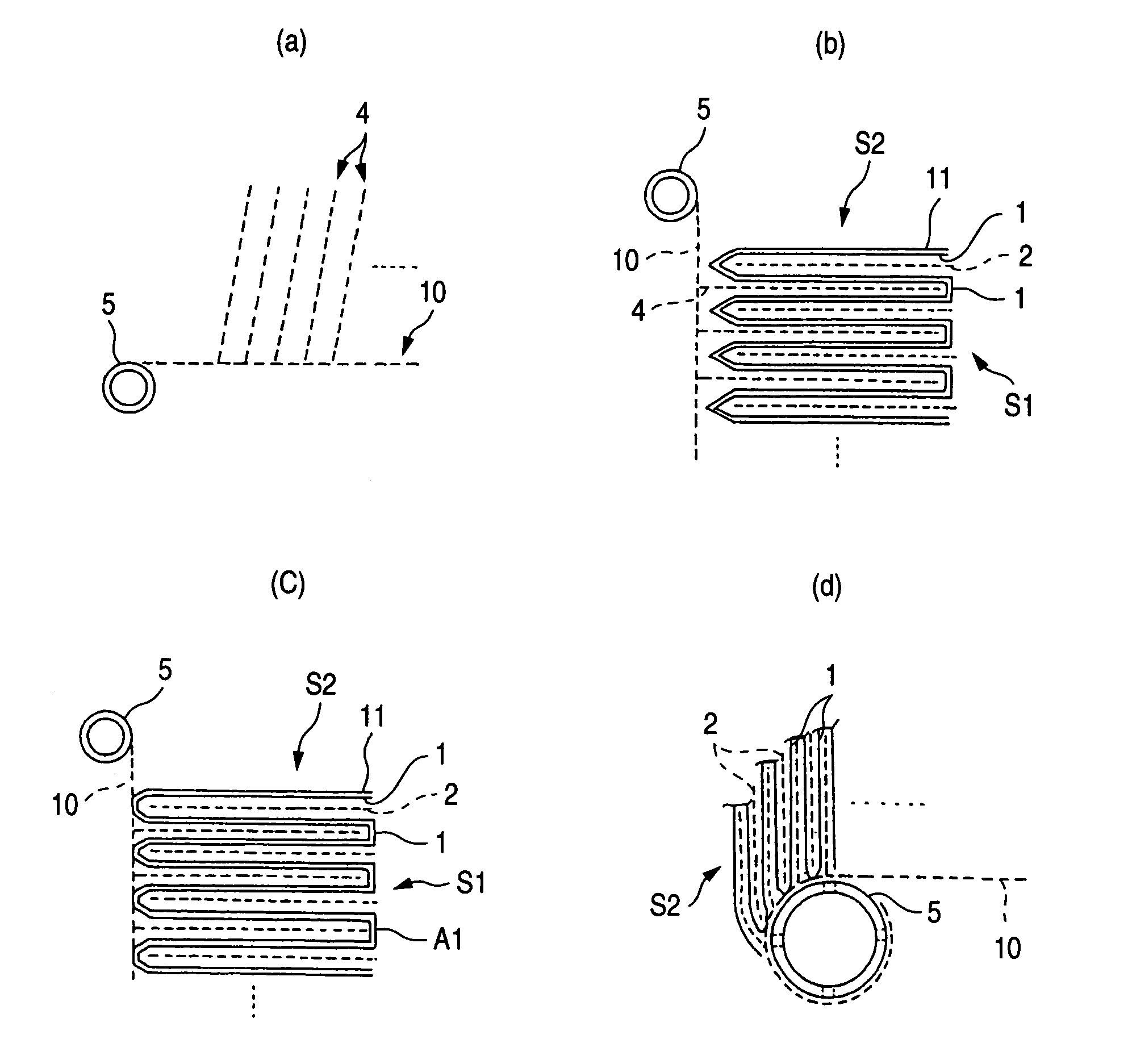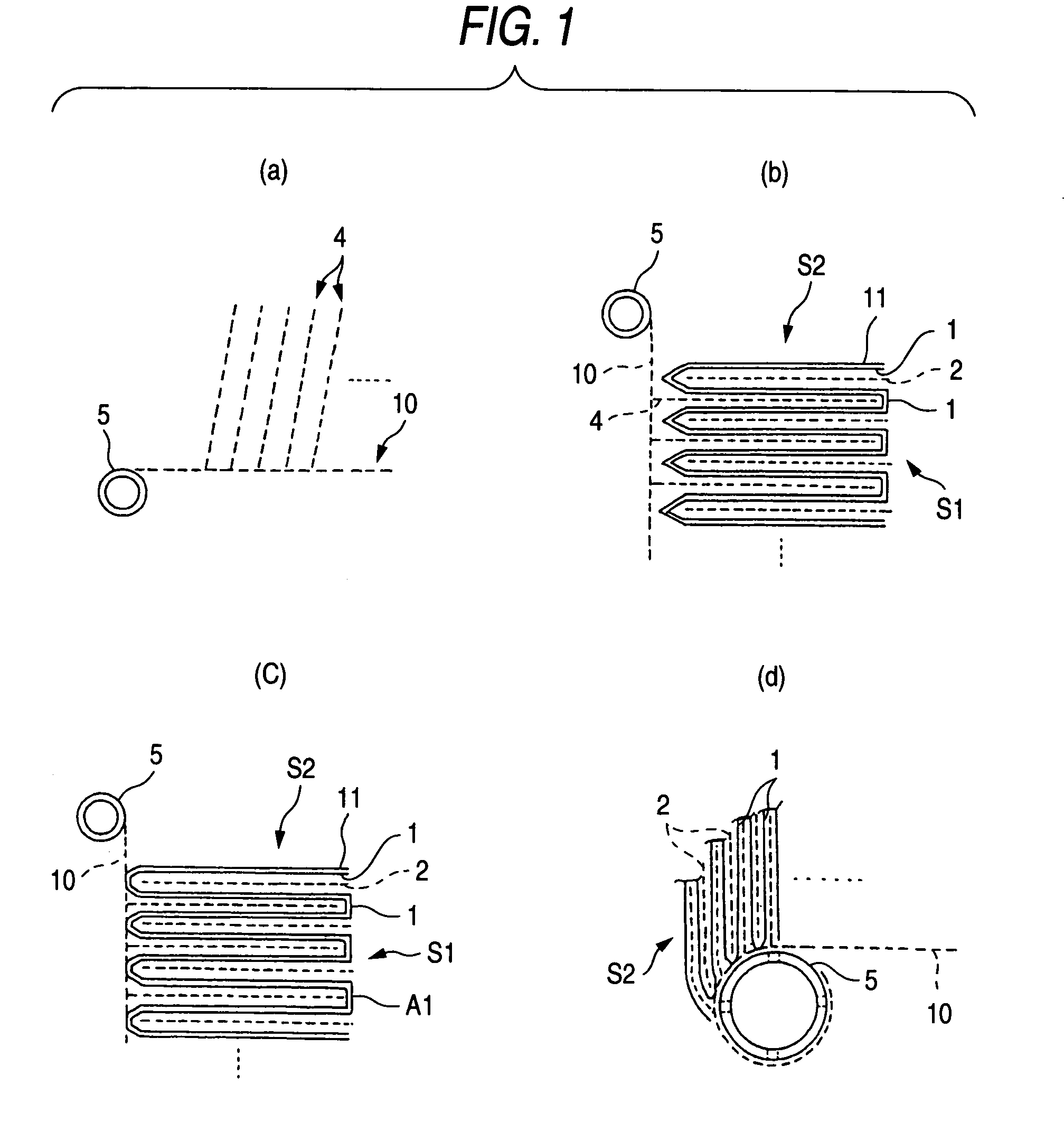Process for producing spiral membrane element
- Summary
- Abstract
- Description
- Claims
- Application Information
AI Technical Summary
Benefits of technology
Problems solved by technology
Method used
Image
Examples
Embodiment Construction
[0078] A 924 mm-wide membrane (NTR-759HR) manufactured by Nitto Denko Corp. was unwound and, simultaneously therewith, 5 mm heat sealing was continuously conducted in a width of 10 mm from each side edge. A fusion-bondable tape having a width of 20 mm was applied to the edge of the permeation side of each fusion-bonded part at a pressure of 0.05 MPa while avoiding wrinkling. It was ascertained that no wrinkles were formed. A PET tape NO. 31B having a width of 50 mm (manufactured by Nitto Denko Corp.) was applied to the feed side of the membrane at the same interval of 750 mm in the length direction while avoiding wrinkling. After the tape application, a metallic edged tool having a width of 0.5 mm and a mold as a receiving tool were used to form a line at a pressure of 200 N in each part to be creased. A feed-side passage material made of PP and having a width of 924 mm was cut into 750 mm beforehand. The cut feed-side passage materials were fixed alternately to the parts to which t...
PUM
 Login to View More
Login to View More Abstract
Description
Claims
Application Information
 Login to View More
Login to View More - R&D
- Intellectual Property
- Life Sciences
- Materials
- Tech Scout
- Unparalleled Data Quality
- Higher Quality Content
- 60% Fewer Hallucinations
Browse by: Latest US Patents, China's latest patents, Technical Efficacy Thesaurus, Application Domain, Technology Topic, Popular Technical Reports.
© 2025 PatSnap. All rights reserved.Legal|Privacy policy|Modern Slavery Act Transparency Statement|Sitemap|About US| Contact US: help@patsnap.com



